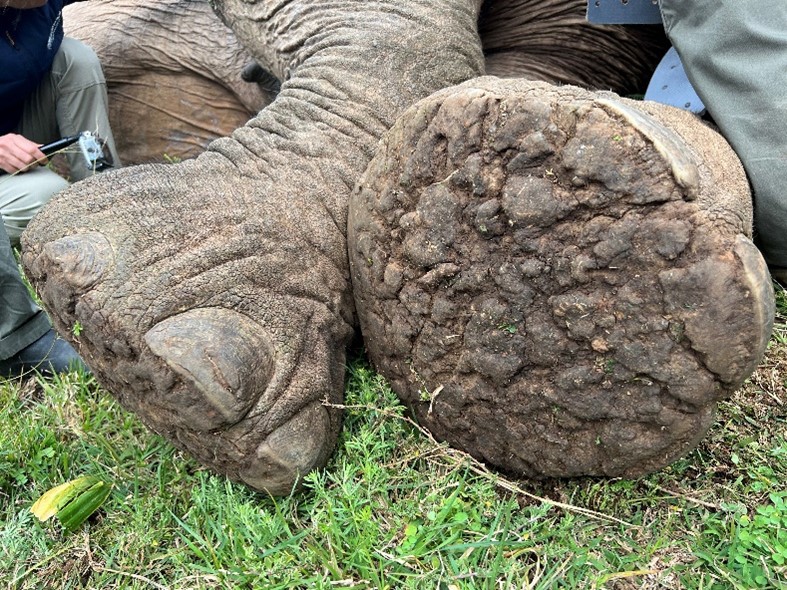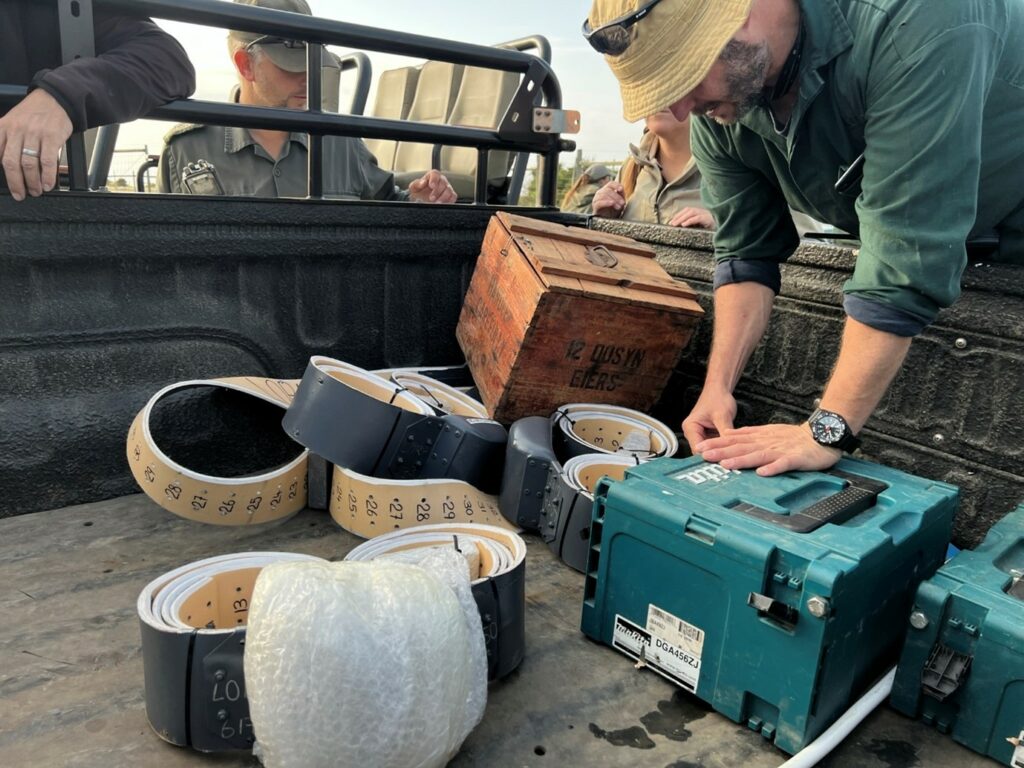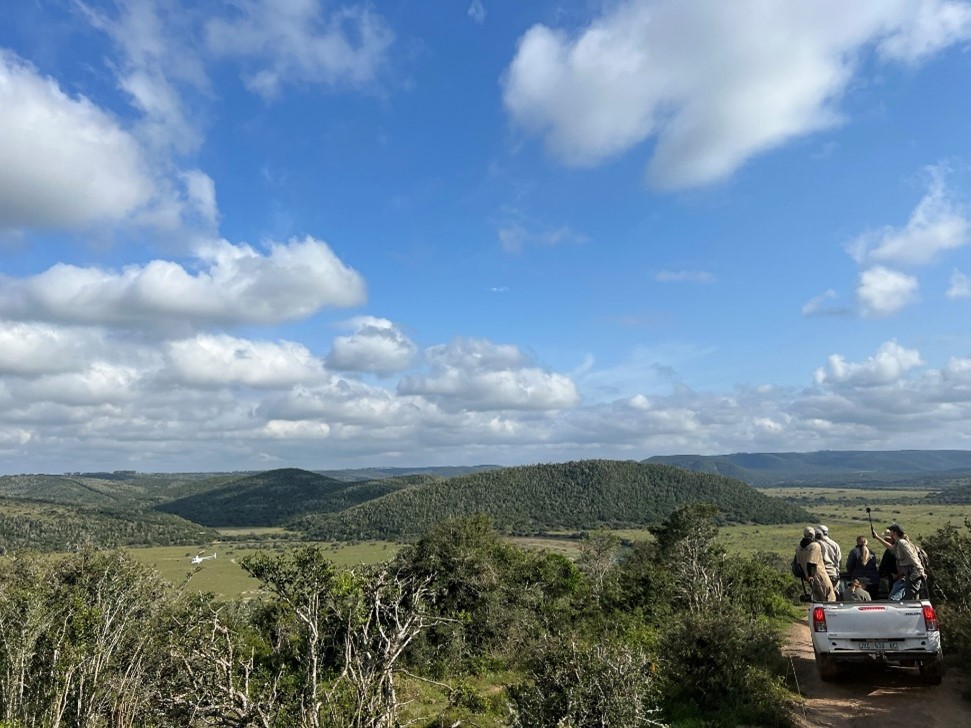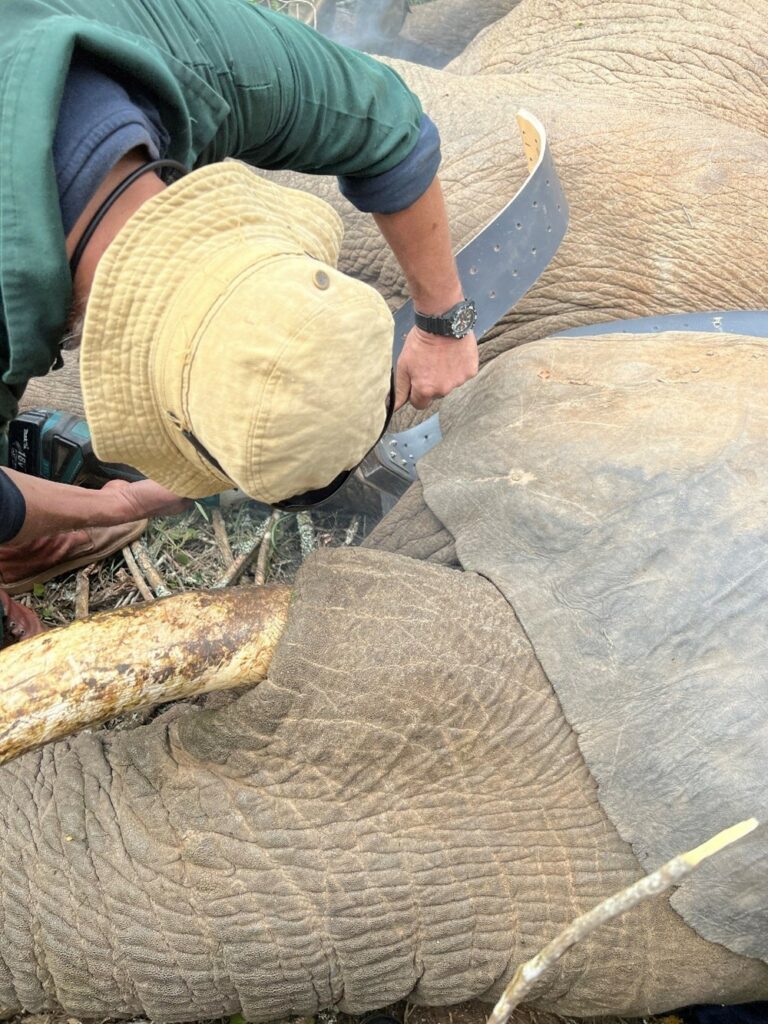Following a whirlwind journey from London to Port Elizabeth via Johannesburg, I united with seven other researchers from different sides of the world, all with an enormous breadth and depth of knowledge and expertise. On arrival to Kariega Conservation Centre in the Eastern Cape, we hit the ground running! Antoinette, David and Brooke presented information that we would need to fit LoRa (long range) radio collars to six elephants in the reserve, and collect samples and accurate measurements during the collaring operation. Part 1! Days 1 and 2.
Written by Ashley Coe, BTEH Elephant Researcher 2022
The primary mission of the collaring project is to understand the movement patterns and behaviour of elephant herds on both sides of a fence which currently divides two distinct areas at Kariega Game Reserve. Next month, the first fence will be removed to allow the two elephant populations to meet, whilst also enabling genetic pool mixing. Next year, the reserve will expand, incorporating new areas to allow wildlife to roam more widely and freely, thereby contributing to increased elephant well-being.
The elephants to be collared had already been specifically chosen and identified. LoRa collars would be fitted to two cows from one side of the fence, who were both matriarchs of their separate herds, and two bulls from the other side of the fence. GPS data from the LoRa collars would be collected every 30 minutes, which would be viewable in real-time to illustrate elephant movement patterns, whilst recording their speed, direction of travel and interactions.
To prepare, we practiced attaching a collar to one of our researchers whilst he lay on the ground (!), Ram lay still whilst we fixed the collar in place. The collars consist of an adjustable piece of fabric, LoRa radio transmitter with battery, and a small weight to ensure the collar was balanced and correctly sat around the neck. Whilst the collars were fitted on the elephants, we would make the most of time available to record data such as shoulder height, total back length, foot and tusk length and circumference, and take blood and hair samples.
Once everyone had assembled, head wildlife veterinarian, Dr William Fowlds, briefed the team, which comprised of vets and veterinary students, helicopter pilot, drivers, Kariega management and staff, and elephant researchers. Everyone was slightly nervous as to how the day would unfold! This was the first time that an elephant procedure of this size had taken place in the reserve. The matriarch (named Matriarch) was the first elephant to be identified from the helicopter. The pilots’ ability to fly over the identified cow, close enough to dart, then coerce the remainder of the herd away to isolate the Matriarch as gently as possible, was incredible. Following darting, Matriarch fell asleep after 6 minutes, in the open, and in a perfect position for the procedure.
I was watching the helicopter tentatively from one of the vehicles, with a group of researchers and veterinary students. The vets were the first on the scene, and when we were given instruction, we jumped into action. The vets began monitoring vital signs including BPM and breathing rate and body temperature, they reviewed body condition, took blood samples, administered vitamin injections, and tended to minor injuries.

Once we were given the thumbs up by Dr Fowlds, we were able to begin collecting measurements and fixing the collars. Everyone moved as quickly as possible in order to minimise the length of time for the procedure as much as possible. My first task was to measure the foot and tusk length & circumference, which went according to plan (although only possible for the right foot as the left was inaccessible as under the other!).

Within 16 minutes, the collar was successfully fitted, all measurements and samples taken, and antidote administered. Everyone returned to their vehicles with relief, Matriarch rose to her feet and slowly moved into the forest to immediately to join her herd. It had been a huge success. Now it had to be repeated three more times!

As the day unfolded, the three remaining elephants were successfully collared, albeit the last bull in a more challenging environment… in dense bush, which made manoeuvring around him more difficult. With the help of a chain saw to remove dense thickets, the area was cleared, and the collar successfully attached.
The project so far has been a huge success, the collars are sending GPS data and all elephants are fit and well. An unforgettable experience, with hopefully more to come!
Ashley Coe
BTEH Elephant Researcher 2022
Special thanks to
Bring The Elephant Home thanks specially those who helped make this possible: Dr. William Fowlds Wildlife Veterinarian, Vets Gone Wild, Kariega Foundation, our sponsor Abri voor Dieren Foundation, African Wildlife Tracking and our elephant research volunteers.



